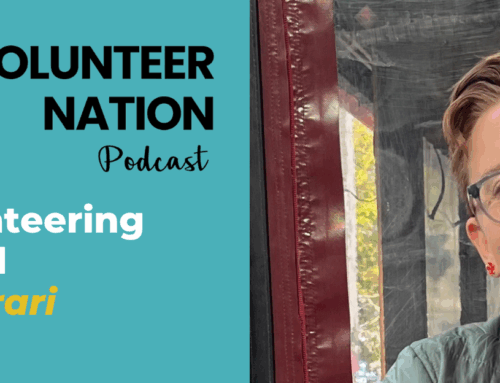 How to Convert Nonprofit Data to Wisdom: Is it All About the Numbers?
How to Convert Nonprofit Data to Wisdom: Is it All About the Numbers?
Nonprofit data can be a powerful tool for generating a greater impact on communities. But when it comes to converting trends into something that informs our actual, on-the-ground management decisions things can get confusing in a hot minute.
For example, back in 2011 VolunteerMatch, an online site for connecting volunteers and nonprofits, posted an article about recent trends in their online search traffic. The numbers are up, way up. They had experienced the highest level of activity in over 18 months. In virtually every major city there had been an increase, and in cities such as Boston and San Diego, the total number of people searching for volunteer gigs had doubled.
Then again in January 2017, they experienced another exponential surge in traffic. In the previous year, the website averaged 41,324 visits per day. However, on January 24, 2017, the busiest day in the website’s history, it was visited 72,355 times. From January to February 2017, they welcomed over half a million unique visitors.
But what do these trends mean? And, what should organizations do with them?
Four Steps to Convert Nonprofit Data Into Action
In recent years, nonprofits have begun to rely more and more on data to track and describe the outcomes their programs are delivering in local communities. This is a good thing; however, the numbers alone don’t make us successful.
The nonprofit data that organizations collect need to be converted into concrete strategies we can put to use to inform our future program decisions.
So how does this conversion work? How do you move from merely reporting numbers to making changes? I suggest using a five-step process that transforms raw data into information, then knowledge, then wisdom that can be put to use.
Using Volunteer Match outcomes as a simple case in point, here’s how it breaks down:
Step One: Define Consistent Data Points
 First and foremost, you need to know precisely what you are tracking and if your data is reliable. Volunteer Match tracked the number of volunteer searches. For their first surge in traffic, they report the total searches for the same months — May 2010 versus May 2011. But, in the second surge, they compare a few months with a calendar year.
First and foremost, you need to know precisely what you are tracking and if your data is reliable. Volunteer Match tracked the number of volunteer searches. For their first surge in traffic, they report the total searches for the same months — May 2010 versus May 2011. But, in the second surge, they compare a few months with a calendar year.
To ensure a solid foundation to work from, make sure you are tracking apples to apples to increase the power of the insights. For example, comparing the same series of months can help you better identify seasonal differences.
In addition, “online searches” should be defined by the same criteria (for example, to be counted must they be complete searches? Did they have to visit an open posting? Did the search have to result in a match? etc. Or, is simple visits to a website?). All these decisions should be made before you started counting.
Step Two: Choose a Manageable Number of Data Points to Track
To keep nonprofit data manageable, it’s also important to limit what you will track and report.
To be credible, the data collected must be complete and accurate. Anyone who has dealt with volunteers or staff who are “allergic to paperwork” knows what a struggle it is to get everyone to submit their reports.
As the old saying goes — if you put garbage in, you’ll get garbage out. So, significant effort must be put into gathering as complete data as you can. This process is much easier, when you have fewer data points to keep track of.
Did VolunteerMatch have the resources to track the outcomes for each city, suburb, town, and hamlet in the land? Probably not.
So, in their first report, they chose to focus their attention on counting the activity in 25 major cities to describe their major trends. Does this help the folks who aren’t on their list? Maybe, maybe not.
But limitations they placed on what they collected and reported helped them manage their resources and time. Similarly, you should be prepared to make some tough choices about what will be collected and reported and what will not make the cut.
Step Three: Convert Data Into Information
There’s a reason people use the term “raw data.” It’s compromised of numbers in their most unrefined form. To transform these digits into something your team can begin to analyze and interpret, some finishing work needs to be done.
In their first post, VolunteerMatch uses a straightforward layout to accomplish this — they list their cities, each outcome period and the overall change in columns. This simple layout helps the viewer quickly see the overall picture, and the data has now been converted to information that can be more easily used.
When sharing data with your team, make sure it is presented in a way they can easily understand. Unfortunately, most of us aren’t math whizzes. But, many of us respond to visual cues.
Use simple layouts and make liberal use of charts and graphs to describe what the numbers say. The value your team can add to the mix isn’t really about whether they can crunch the numbers, it’s about what they see in the numbers and how that information can be used to better inform your programming.
Step Four: Convert Information Into Knowledge
Knowledge is gained through the interpretation of the information at hand through the lens of personal and collective experience.
Ask your team to answer this simple question “What is interesting, surprising, and/or telling about our results?” This gives permits people to think freely and to identify the patterns they see with less prejudice. It also encourages people to avoid the blame game and instead look for deeper meaning.
When all is said and done, there are no limitations on what they may see, only on what may be truly helpful to the program’s success.
Humans develop knowledge when the new information they receive is somehow reconciled with the information they already know. In the case of VolunteerMatch, the total number of volunteer searches decreased by about 200 over the past year in Nashville.
It was a surprising result because it was the only city that experienced a decrease. But why? The staff at VolunteerMatch took into account their previous knowledge of natural disasters and explained the anomaly by citing the flood that occurred in middle Tennessee last year.
During the second VolunteerMatch surge, the website visits correlated with the presidential inauguration and massive citizen action around the world.
By combining the information provided in the report with their own experience, they were able to develop deeper knowledge.
Step Five: Convert Knowledge Into Wisdom
 Genuine wisdom, which is the ultimate goal of data collection and outcomes tracking, is nurtured into fruition over time. It also often requires that additional information be brought into the mix.
Genuine wisdom, which is the ultimate goal of data collection and outcomes tracking, is nurtured into fruition over time. It also often requires that additional information be brought into the mix.
When considering customer satisfaction survey results, for example, an organization may decide to conduct focus groups to further explore problem areas identified in general by the surveys. If there was low satisfaction in a specific area of service, a focus group may be able to explain why.
In the case of the VolunteerMatch results, does the Nashville flood explain the decreased number of searches? Did the flooding affect the public’s ability to surf the internet, their willingness or availability to volunteer, or possibly the capacity of local organizations to reach out and coordinate local volunteers? Hard to say.
One might argue that natural disasters result in increased community involvement. Consider the massive public responses to the recent disasters in Japan and Haiti in terms of donations. The only way to truly know is to gather more information and track data over time.
If the 2011 results for Nashville are significantly different than the overall annual trends, the flood may be the culprit. If not, more research may be needed.
Wisdom is also earned through the mistakes we make, as long as we take the time to analyze what went wrong and resolve to fix it.
What deeper meaning can we glean from the results in Nashville? If the flood did affect volunteer search rates, what does this say to other organizations that rely on volunteers and are located in disaster-prone areas? What resources and planning will need to be in place to ensure the most effective use of volunteers should disaster strike?
It may seem that nonprofit data collection and analysis raises more questions than it answers. And it is tempting to think that pure data shines the light on universal truths. After all, numbers are concrete, scientific, unwavering.
Or so it would seem.
As an alternative, think of your data collection as the first step in a process with enormous potential to help your team develop the wisdom it needs to make the best decisions possible for your organization.
By following these five steps you’ll be better able to convert raw data into actionable wisdom that can inform your management decisions.
How to Track Impact with Nonprofit Data: Some Excellent Free Resources
Another way to increase the power of nonprofit data is to consult with industry benchmarks, like those we share in our Volunteer Management Progress Report and others.
The Urban Institute’s Outcome Indicators Project provides a framework and some specific outcome measures for fourteen program areas — such as employment training, health risk reduction, and advocacy — as well as some generic performance indicators any program can use. It’s a great place to start.
In addition to tracking individual data points and comparing them with benchmarks, it also helps to design a system for collecting actionable data.
The Urban Insitute’s publication, Finding Out What Happens to Former Clients, gives some specific tips on how to conduct follow up with people you touch to determine the impact of your services on their lives. This goes for volunteer involvement as well.
In addition, The Guide to Outcomes-based Evaluation for Nonprofit Organizations with Very Limited Resources, found in the online Free Management Library is also an excellent resource for understanding outcomes management in general.
If you really want to delve into this topic, check out the book The Nonprofit Outcomes Toolbox: A Complete Guide to Program Effectiveness, Performance Measurement, and Results. It provides the soup-to-nuts tools and concepts you need to develop a performance management framework.
Finally, if you’re seeking information on how to track volunteer impact specifically, check out Measuring the Impact of Volunteers: A Balanced and Strategic Approach. The book delves into how to generate wisdom by creating a unique Volunteer Resources Balanced Scorecard.
What Other Nonprofit Data Resources Do You Recommend?
I’ve shared a few of my favorite resources and a simple five-step framework for converting data into action.
What resources have helped you? I invite you to post them in the comments below.







Leave A Comment